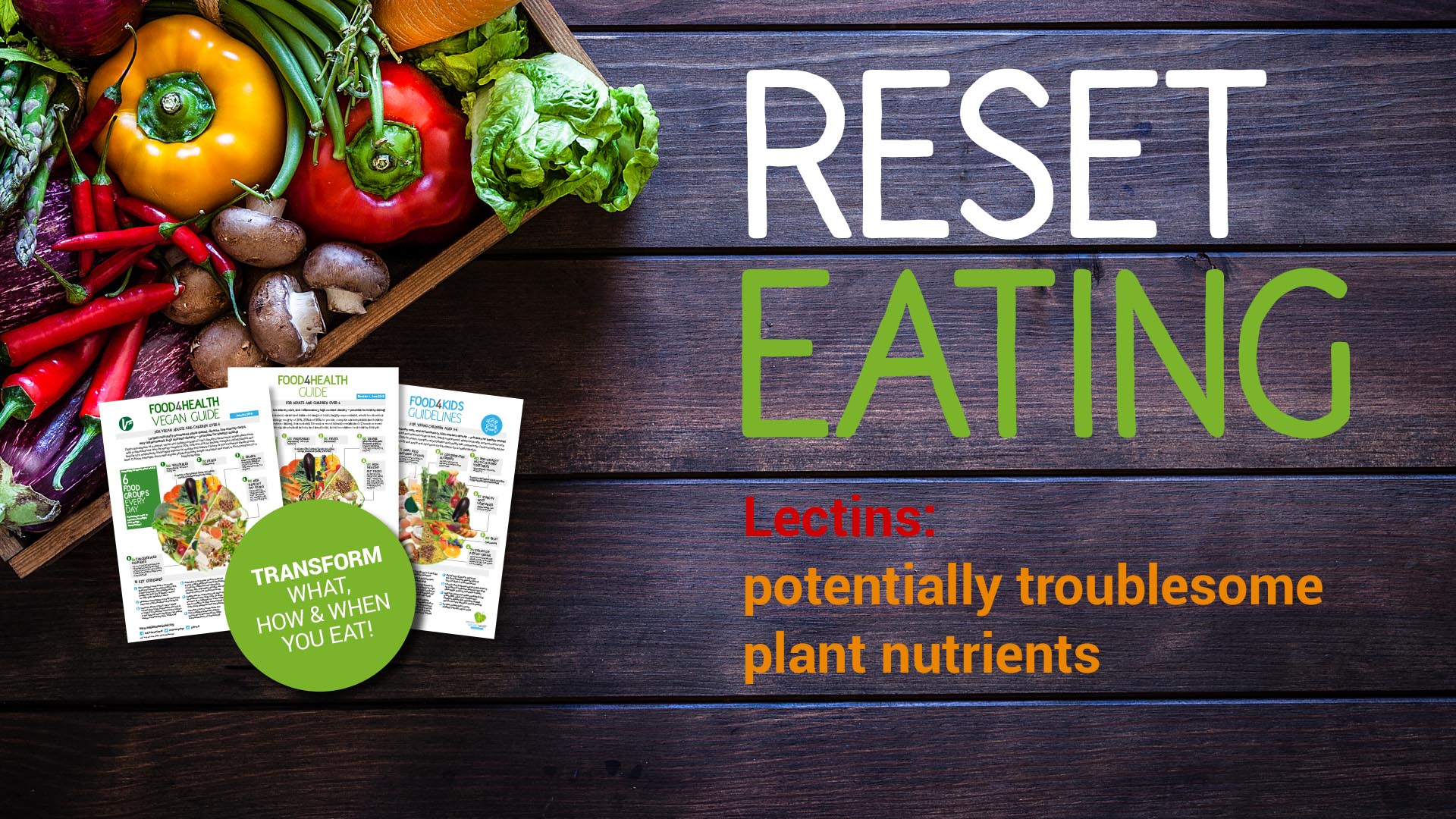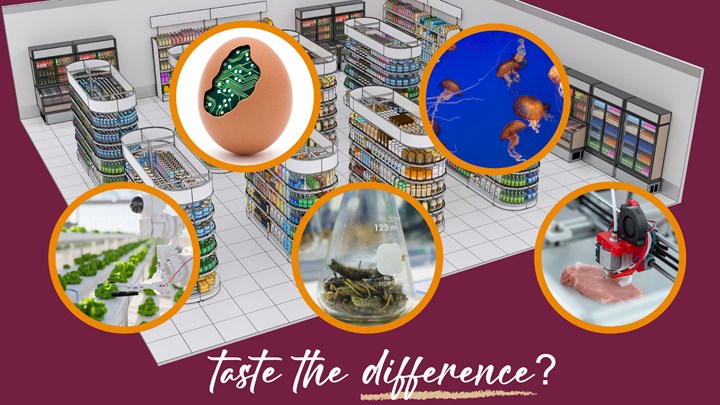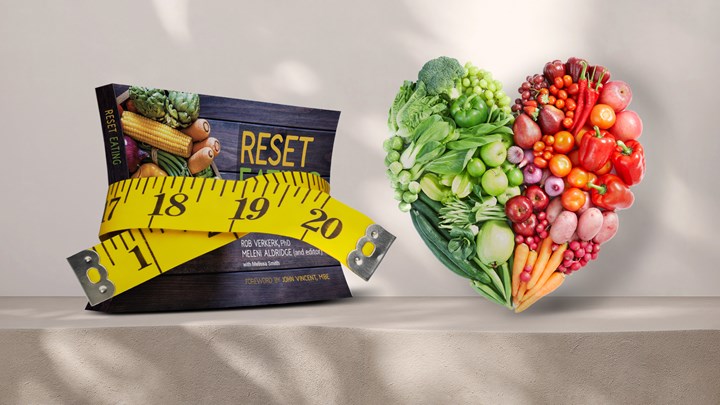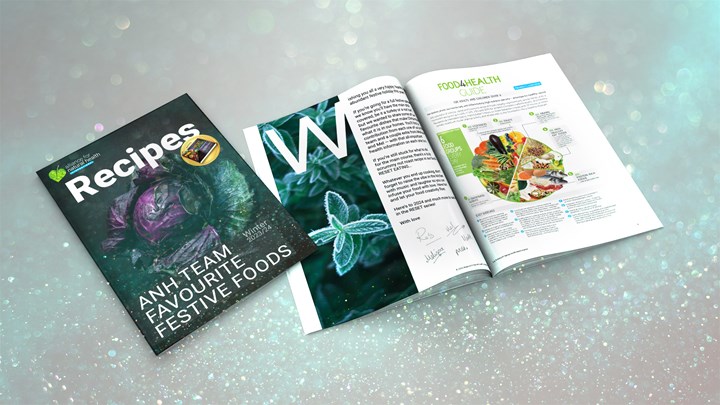Content Sections
Since the successful release of our eBook entitled Your Food4Health Guidelines last November, we've been working hard to bring out an updated second edition. This new edition brings you additional chapters, a whole section of vegan keto-adapted recipes, expert comments and a foreword by John Vincent MBE, co-founder of LEON Restaurants, pioneers of 'naturally fast food' that have, in the UK at least, been taking on the likes of McDs, Burger King and KFC in the marketplace.
We've given the book a new name! It's now called RESET EATING, doing 'what it says on the tin’ because the information contained within the pages will literally help you turn your food into powerful medicine to reset your metabolism to help you regenerate health and resilience. That's in a world where others are considering resetting the geopolitical system that controls the social and economic systems on our planet (see our separate piece on this).
As those of us in the northern hemisphere start to emerge from the deep dark winter, it’s natural to want to make our diets lighter, fresher and more plant-based. But not everyone’s bodies are tuned the same way and the anti-nutrients in some plants can present problems. We here deal with what we feel are the 4 main anti-nutrients in RESET EATING; lectins, phytates, oxalates and histamines.
We’ve excerpted the lectins section from the book below so you can get future-ready with your spring - or winter - cooking. We can’t wait to bring you more details on the release of RESET EATING and as soon as we have a publication date, you’ll be the first to know.
KEY POINTS
- Plants have formed the basis of our diet for millennia
- They have evolved a complex arsenal of chemical defences to protect them against predators, and consumers have typically developed ways of overcoming these toxicities
- Lectins often referred to as ‘anti-nutrients’ as they can block the absorption of other nutrients, lectins are a key part of a plant’s toolkit helping them to survive
- They can be present in high concentrations in legumes, cereal grains, seeds and nuts, as well as some fruits and vegetables (e.g. root vegetables)
- Diets containing high lectin concentrations, particularly among those with gut sensitivities or systemic inflammation, may be harmful
- The key to making lectins safe to eat and digestible is to prepare and cook them properly
- RESET EATING will take you to a world where food is medicine and health creation is central to everything
Lectins - the low down
Plants were here a very long time before humans and other animals. The first photosynthetic plants appeared on land around half a billion years ago, and flowering plants – which include the main crops we eat – around 200 million years ago. Turn that 200 million years into a 24-hour clock and you’ll find we modern humans have only been around for just 90 seconds!
If you’re a plant, it’s been a busy time. It’s way more crowded now and green plants have found themselves relegated to the bottom of the food chain, literally. But in order to survive, plants have evolved an arsenal of chemical warfare agents as part of their survival strategy. Plant lectins are one of the prime agents in that arsenal, although they’re thought to have other functions in a plant too, especially ones linked to cell communication and recognition.
Plant lectins represent a very diverse family of protein molecules. One of their stand-out roles is to protect their babies from invading microbes and insects. They’re referred to as ‘sticky’ proteins because they bind to particular sugar (carb) components on cell membranes, especially molecules called glycoproteins and glycolipids. Most plant lectins cause cells to clump together, hence the name ‘agglutinin’ e.g. wheat germ agglutinin. Once attached to sugar molecules, they can become stealth invaders. They can hack into a microbe or herbivore’s system and really mess with it.
Take for example, sialic acids. These are sugar molecules involved in cell to cell communication. When lectins bind to sialic acid, they’re able to hack in and disrupt the communication between neurons and in this way, they can paralyze an insect herbivore making it prey instead. Not being equipped to do the business themselves, they release pheromones that call in the herbivore’s predator to do away with them as they lie there paralysed.
Anti-nutrients
Lectins are produced by all classes of living organisms and even by different types of cells. They are structurally very diverse and can have highly specific functions like enzymes or antibodies. Some foods are naturally higher in lectins than others while particular lectins are more toxic than others. The other reason why lectins are called ‘anti-nutrients’ is because they can also significantly reduce the digestibility and absorption of protein, and some vitamins too. One of the first lessons we learn about cooking dried legumes, especially red kidney beans that are loaded with lectin phytohaemagglutinin, is that they need to be soaked and boiled before they’re safe to eat. Improperly cooked kidney beans can kill you. Then again so can just a few molecules of ricin – the lectin from the caster bean plant.
To a plant, we’re just another herbivore. Luckily, this is one time that size really does matter. The dose that paralyses an insect may not be enough to do us any harm at all, if we’ve got a robust constitution. Or it may take many years of regular, low-level exposure before we feel the effects. By then, of course, it’s hard to narrow down the cause of our ills.
Our sensitivity to lectins varies a lot. Key considerations are the health of our gut and microbiome, our immune system, our age (younger people are generally more resilient), our overall level of vitality and of course, the level of consumption. If you’ve ever felt bloated, windy or tender in the gut after indulging in too many edamame, it may have been down to lectin-sensitivity. Remember, the soybeans in edamame haven’t been cooked long enough to lower the lectin levels. Typical symptoms of lectin sensitivity include bloating, diarrhoea, nausea and gas, all of which can lead to a leaky gut barrier over time and exposure. But the good news is that, addressed early enough, it’s all reversible.
Lectins vs our paleolithic genome
Our genomic line is about half a million years old. We were hunters, gatherers and foragers who used to have a heavily plant-based diet. This is why our genome and our microbiome are designed to recognise and communicate well with the lectins in leafy plants and some roots. It was only around 12 thousand years ago that grains and beans (legumes) became common staples. Before that time, we had no way of eating these plants in quantity as we didn’t cultivate food crops or process them into edible foods. The result is that our genome and our gut microbiome can be challenged by these ‘new’ lectins – especially when they assault our system in quantity. Maybe not in all people all the time, but more so when you’re immune challenged, chronically stressed, older or suffering gut distress.
California-based Dr Steven Gundry, one of the foremost clinicians and researchers into lectins and author of The Plant Paradox: The Hidden Dangers in “Healthy” Foods that Cause Disease and Weight Gain (2017), puts forward that we have only been exposed to lectins from the Americas for a mere 500 years. He cites this, along with exposure to too many grains and legumes, as being one of the drivers of the epidemic of autoimmune diseases. It’s now thought that sensitivity to wheat germ agglutinin, the lectin in wheat, is another contributing factor to the rise in non-coeliac gluten sensitivity. The adverse reactions from which many suffer might not solely be down to the action of gluten on our tight junctions. In fact, Dr Gundry has been so successful in changing the health fortunes of his patients with a lectin-free diet – many of them vegans and vegetarians – that he’s no longer a surgeon, preferring instead to use food and lifestyle modification as a healing modality.
Keeping food your friend
It would appear that most of the potentially active lectin allergens come from legumes because they are seed storage proteins. This makes total sense because it's only natural that the parent plant would go to great chemical lengths to protect its babies. This in turn makes lectins behave like potential food allergens as they are able to trigger pathways in the body that are involved in allergic and sensitivity responses in those that are vulnerable.
For those of you who are, or who think you might be, sensitive to lectins, the biggest offenders are grains — particularly wheatgerm agglutinin — legumes (including soy and peanuts), seeds (including cashews) and some of the much-loved members of the deadly nightshade family – tomatoes, eggplants, peppers (bell and chili), potatoes and yes, even the beloved goji berry. But all is not lost! There are a host of low lectin vegetables out there including avocados, leafy greens, the entire incredibly healthy cruciferous family (broccoli, brussels, cabbage, pak choi, kale, etc.), carrots, cooked sweet potatoes, asparagus and all berries to name a few. When it comes to soy, do as the Japanese do and make sure it’s properly fermented. As more becomes known about the adverse effects of lectins, look out for companies catering to the needs of vegans with lectin-free products.
Many cultures safely navigate lectins in their diet through long cooking times (or a pressure cooker which nukes lectins, but preserves most nutrients), high temperatures (although these can degrade nutrients), fermenting or sprouting or by pairing them with other foods.
In India, for example it’s common to eat a lot of okra alongside lentil-based dhal. Firstly, a true dahl is often slow cooked for several hours, this substantially reducing the lectin content. Secondly, the mucilaginous part of okra is particularly good at binding lectins, as is seaweed, especially bladderwrack.
Many lectins are found in the skins and seeds, so peeling and deseeding fruits and vegetables will do the trick. With legumes, think long cooking times, just like a traditional dahl. After overnight soaking and an initial fast boil for 20 mins (if using dry legumes), it takes time (up to about 6 hours) at a gentle boil to destroy these audacious chemical weapons that have stood the test of time. But it’s so worth giving these foods some extra cooking love as lectins can reduce the amount of protein and essential micronutrients, like vitamins and minerals, that you absorb from these wonderful foods.
If you’re a bread lover and can tolerate gluten, opt for a traditionally fermented sourdough and let those clever microbes lower the level of both the gluten and the lectins. Please note: a lot of supermarket sourdoughs are not authentic because they’re not fermented for long enough. A good sourdough will be fermented for the traditional 24 hours.
End. Buy your copy of RESET EATING now
About RESET EATING
RESET EATING enables you to turn your food into powerful medicine to reset your health and resilience. In it you’ll find information and practical tools, including how food provides specific information for the body. You’ll also find a bunch of recipes for serious health creation. They bring the ANH Intl’s ground-breaking Food4Health approach to life, catering for omnivores, flexitarians, vegans, vegetarians, as well as children.
Readers can choose to deep dive into the science behind metabolic, multi-system flexibility and resilience. You’ll also find out how food can provide information or disinformation for the body, how to crunch the numbers to help you get ‘keto-adapted’. Or you might just want to skip to the 12-step programme, nutrient and food sections for a more practical, just-do-it approach.
On your journey through this information-packed book, you’ll get to grips with microbes, why your gut is immune-central and why you need to avoid the two common allergens that can otherwise derail your best health efforts. Children’s health and re-thinking what kids are eating is crucial for parents who are looking for one book that can help you feed the whole family. Time challenged readers can jump straight to the recipes and just let the food be their medicine!
RESET EATING invites the reader on a health creation odyssey with food — our first medicine — as the foundation of life.
RESET EATING is on general release from the 28th March 2022. We have a limited number of pre-release copies for sale through the ANH shop.
>>> ANH-Intl Food4Health Campaign page
>>> ANH homepage








Comments
your voice counts
There are currently no comments on this post.
Your voice counts
We welcome your comments and are very interested in your point of view, but we ask that you keep them relevant to the article, that they be civil and without commercial links. All comments are moderated prior to being published. We reserve the right to edit or not publish comments that we consider abusive or offensive.
There is extra content here from a third party provider. You will be unable to see this content unless you agree to allow Content Cookies. Cookie Preferences